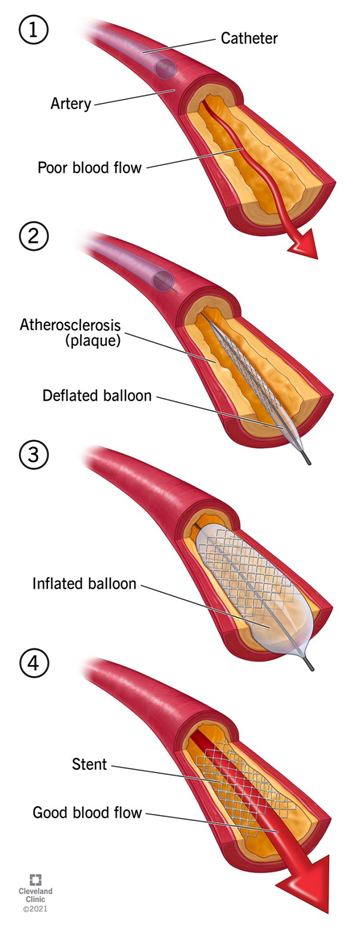What is angioplasty?
Angioplasty is a procedure that opens up the blocked arteries to let blood go through more easily. An interventional cardiologist uses this minimally invasive procedure in tight spots in arteries where plaque makes the space inside an artery too narrow or blocks it.
Who needs to have angioplasty?
People who have coronary artery disease or a heart attack may need to have coronary angioplasty. Angioplasty is also used in other parts of the body that have narrow or blocked arteries, such as your neck, arms and legs, kidneys and pelvis. Angioplasty allows more blood to get through an artery that’s too narrow or blocked with plaque. This means the organ that artery reaches will get a better supply of blood after angioplasty.
What happens during an angioplasty?
- Your doctor puts a catheter or tube through your skin and into a blood vessel in your wrist or groin. They use medicine to keep you from feeling the tube go into your body.
- With X-rays to help find the way, a cardiologistmoves the catheter (tube) through your blood vessels to get to your blocked or narrowed coronary artery.
- When they get to the problem area, your doctor will put in a wire and another catheter (a balloon catheter) that has a very small balloon at the end of it.
- Once they inflate the balloon, it moves the plaque out of the way and off to the side of the artery wall. This clears the way for blood to get through. The doctor will usually then put in a stent, a small hollow scaffold made of metal. Stronger than a balloon, the stent keeps the artery open after balloon removal.
- The stent, which expands and locks into position after it’s put in your artery, stays inside your artery long after the angioplasty is done. Stents have a drug coating that helps prevent your artery from getting too narrow again.
- Sometimes the doctor uses a balloon that transfers its medicine coating to the artery wall. The drug stays behind after the balloon is taken out.
